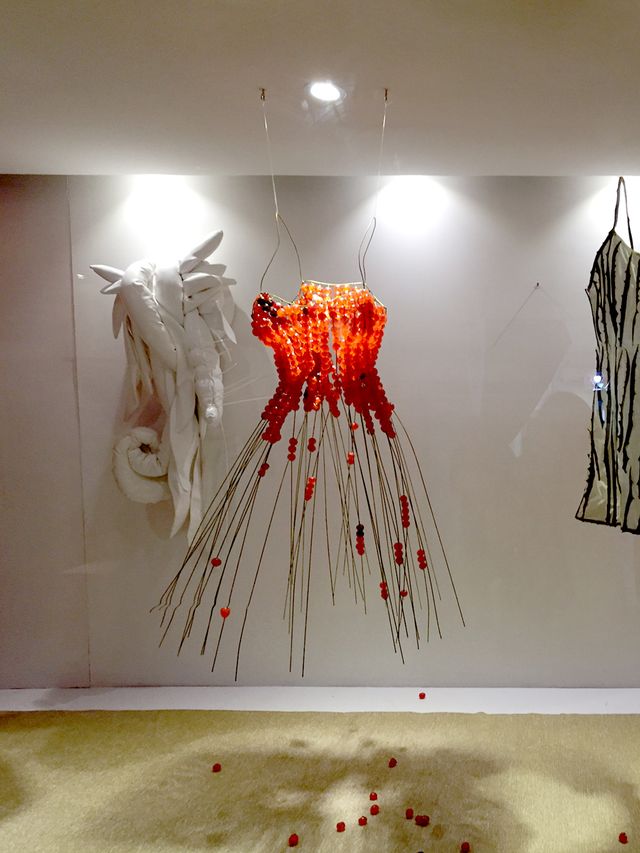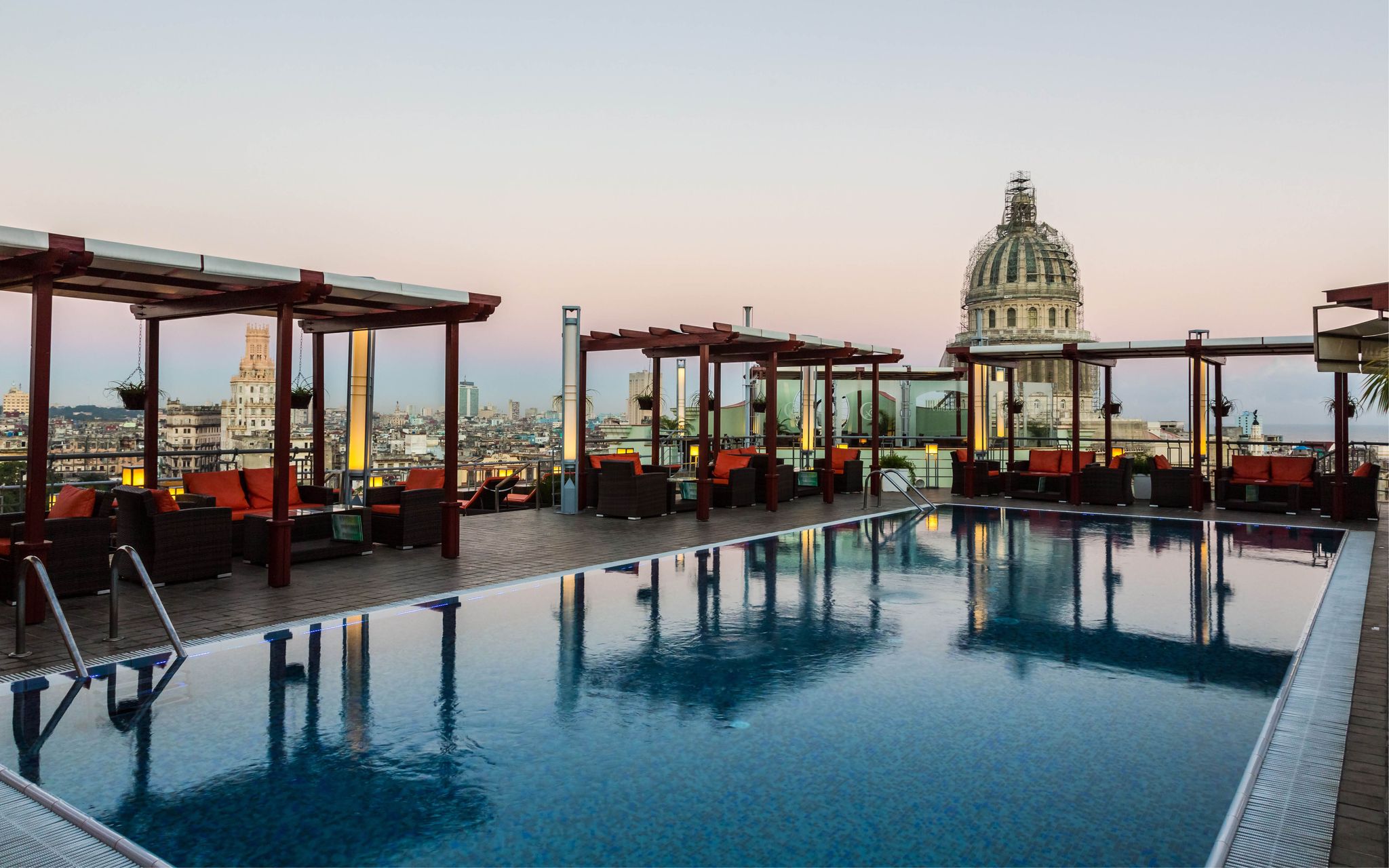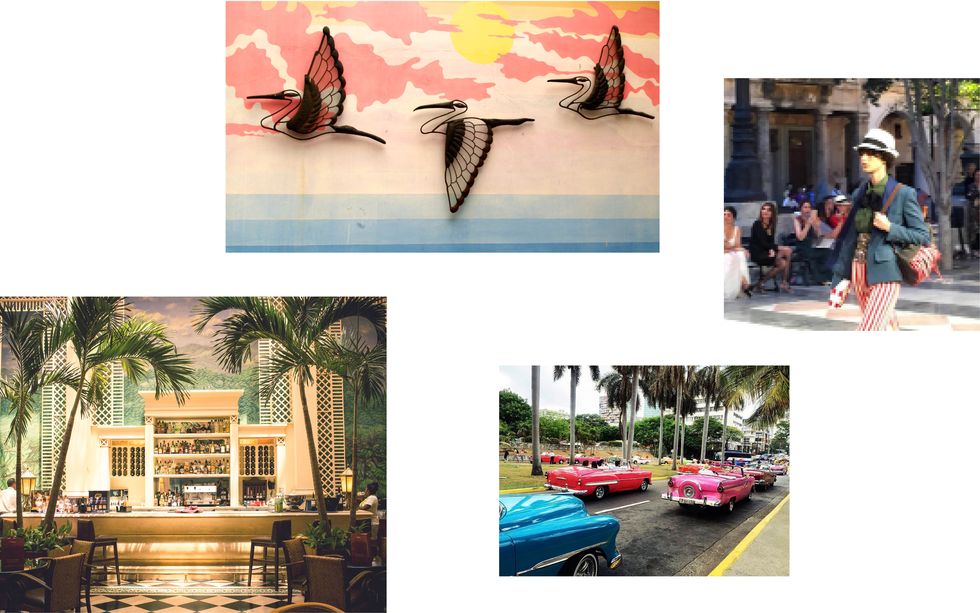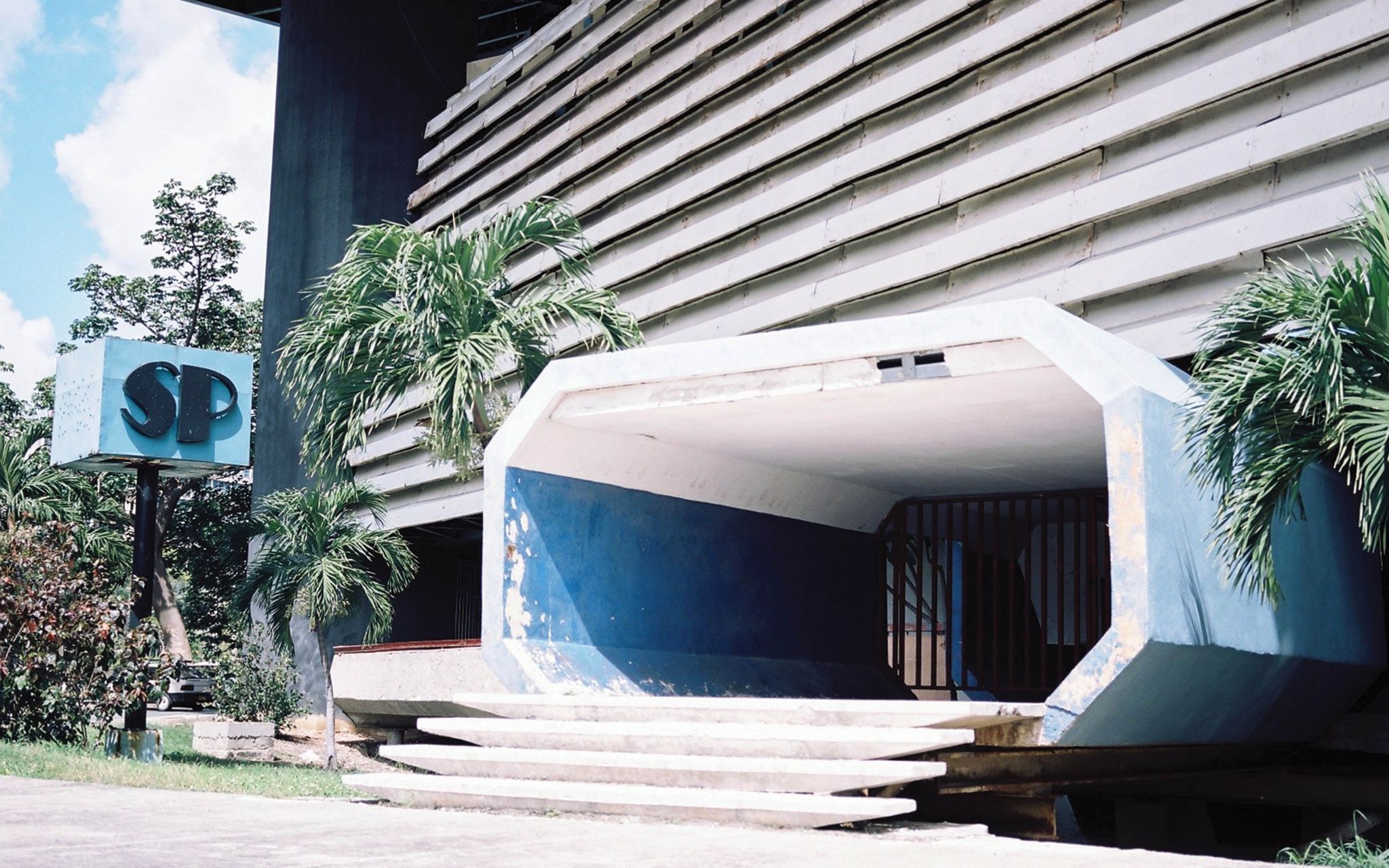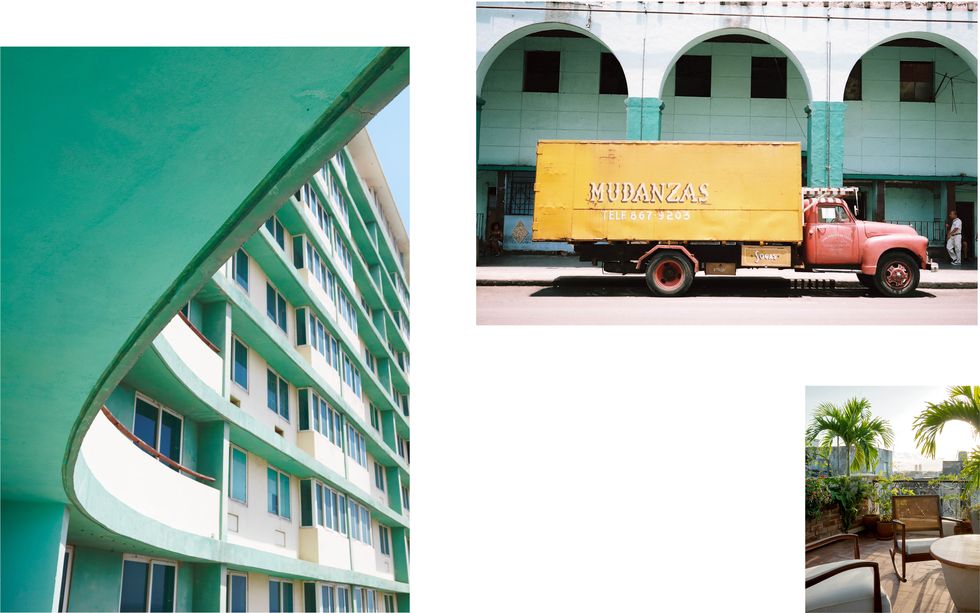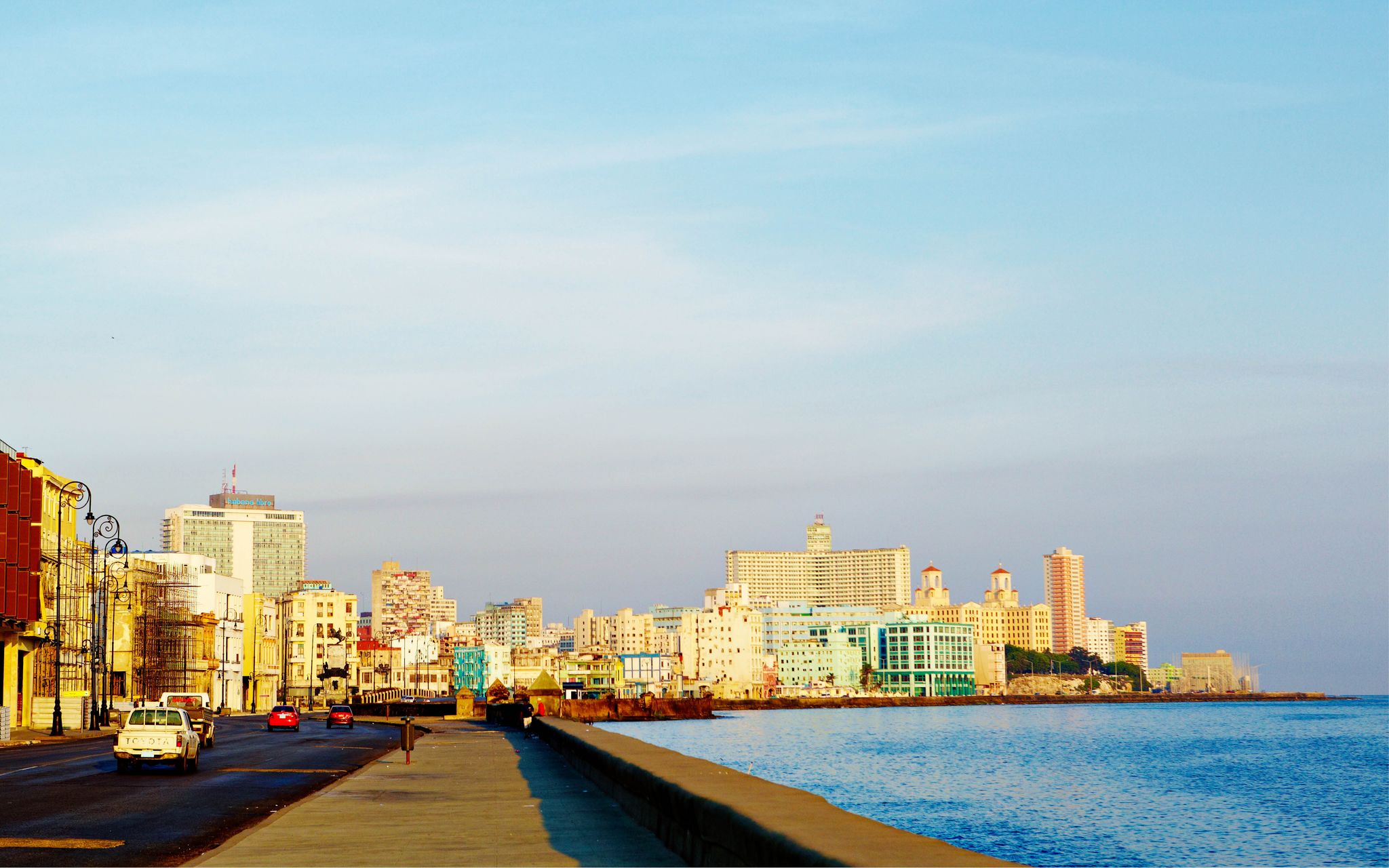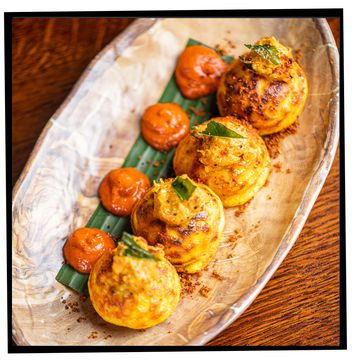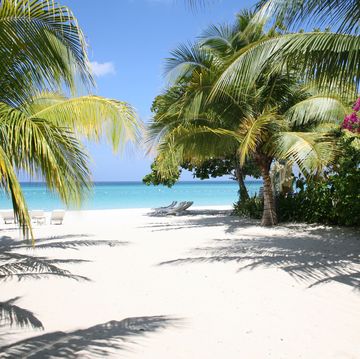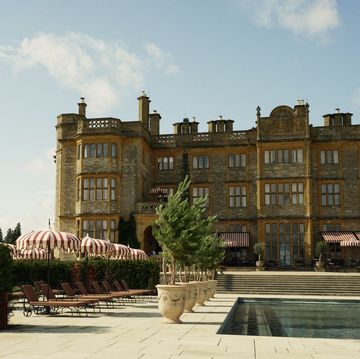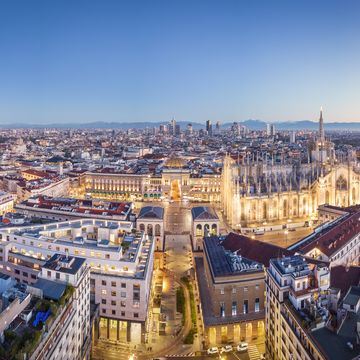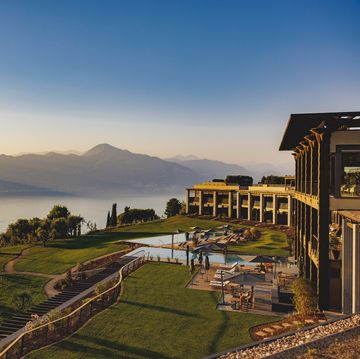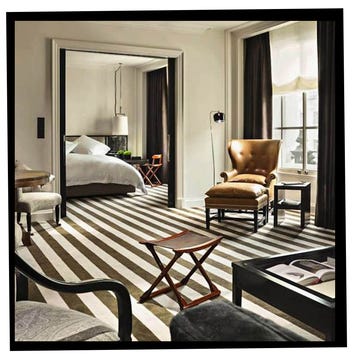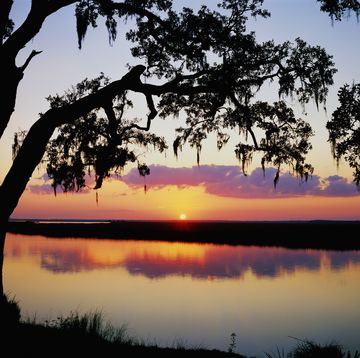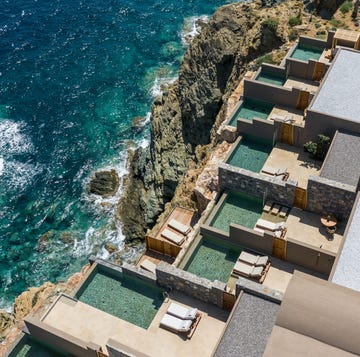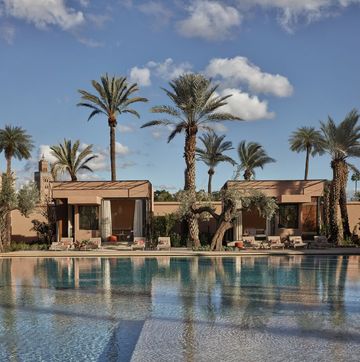Here I am, icy mojito in hand, wandering around a converted peanut oil factory on a steamy Sunday night. It's a cavernous, three-storey building, with the original tall chimney backlit and stretching into the starry sky; inside, a gallery, theatre, two bars and a restaurant. There's a DJ here, a performance artist there, fantastically innovative art on the walls, and a comedian holding court upstairs in the open theatre space, entertaining a young, arty crowd. Sounds like a typical weekend in Berlin or Barcelona. But this is Havana, the Sleeping Beauty of the Caribbean, famous for being trapped in a Fifties' time warp and somewhere I'd never have expected to find a cool, modern, east London-style experience like this. But in the five years since I was last here, it seems to have undergone another kind of revolution.
Welcome to the Fábrica de Arte Cubana (FAC), one of the faces of the New Cuba. You know the kind of buzz you get in places like Brooklyn and Dalston? That feeling that you could convert some old launderette into a cat cafe/Azerbaijani restaurant, or crowd-fund some wacky art project? That kind of 'let's give it a go' optimism? Well, however majestically lovely Cuba has looked (and sounded, music is oxygen here) over the past 50 years, and however resilient and upbeat the Cuban spirit, anyone growing up here would rarely have felt that sense of excitement and possibility. With few able to travel abroad, state jobs paying around £20 a month, no real private enterprise allowed, food rationed, and shortages of everything from tampons to TVs… Whatever the opposite of the world being your oyster is, that would just about sum it up. No prospects. No future. Until now.
The country has been gracefully decaying since the US trade embargo, imposed in 1960 in the hope of crushing the revolution, drastically restricted access to imported goods. Travellers (myself included) are entranced by all that fading grandeur and those fabulous old Chevvies and Buicks rattling along the potholed roads. It was certainly captivating enough for Chanel to show off its Cruise collection in Havana in May, and for Audi to ship a fleet of its new Q2s halfway around the world this summer for the car's launch; not to mention all that architectural eye candy starring in foreign fashion shoots (ELLE was one of the first, way back), and music videos. But however much we foreigners love the magical feel of it as it is ('Go before it changes!' the papers cry), the reality of living with no money to update anything in those magnificently dilapidated colonial mansions – battling against crumbling ceilings, power cuts and ancient wires dangling menacingly like toxic black spaghetti – is anything but magical. But even more spirit-sapping, especially for young people, is that is has been a country living in a hope vacuum.
But it's certainly not like that in the FAC tonight, or in any of the other bars, galleries and restaurants I check out during a whirlwind weekend in Havana. There's a tangible fizz of excitement, quite separate from the usual Cuban salsa-fuelled joie de vivre. And it's not because of the FAC's government controlled prices (around £1.50 a mojito; 70p a beer, so at least some Cubans can afford it), or the thawing of US/Cuban relations.
The main reason for this newfound optimism is the easing of some of the frustrating restrictions around many aspects of Cuban life. President Raúl Castro has lived long enough in his brother Fidel's shadow to want to make his own mark and, since he took over in 2008, he has been tentatively relaxing the ban on entrepreneurship to allow a little private business. Before that Cubans were permitted to open paladares (private restaurants) in their own homes, or to buy a licence to take in paying guests (casas particulares). Now a lifetime of wheeling and dealing to survive can be put to good use by starting a business and actually making some money. All of those classic cars, which used to rust sadly by the side of the road, can now be pimped up to take advantage of the new freedom and operate as taxis, making good money driving tourists around. You can now open a shop, as long as you only sell your own produce or handmade goods; start your own bar, cafe and restaurant or, if you have a lot of funds (and friends in high places), something as impressive as the FAC.
Take 33-year-old artist Idania Del Rio, who I meet the next day at her gallery, Clandestina. She is well known here, not just for her witty take on classic Cuban film posters and slogan T-shirts ('Action causes more trouble than thought' declares the one she's wearing), but because they are on sale in her very own workshop, a bright, two-storey space she now owns in Old Havana. After the revolution, people weren't allowed to buy property, they could only exchange it, but that too has changed. Of course Idania had to jump through all manner of bureaucratic hoops before her dream was realised, but now business looks to be booming, and there really is nothing else quite like it here. Yet.
Even Cuban emigrants are realising they might have a future back home. After seven years in Barcelona, restaurateur Amy Torralbas returned to Havana with her Spanish husband Alvaro Diez – formerly a sommelier in the famous El Bulli – to take over her family's paladar. They have transformed the homey old rooms into a stylish, airy space serving a kind of Spanish-Caribbean fusion (snapper with ginger and coconut vinaigrette or marinated sardines with grilled eggplant and pumpkin), and the style of both the food and the design is something you would never have seen in the Old Cuba, when restaurant food was on a par with school dinners. The paladar goes by the name of Otramanera, meaning 'another way', which is the New Cuba in a nutshell.
Or take chef Alberto Gonzalez, who has returned from Milan where he ran a Michelin-starred restaurant, to open the Salchipizza bakery in Havana Centro. It is the first place selling decent bread (flax, wholegrain, sunflower) on the island and if the locals can't afford it, he helps them out (Cubans are like that), even offering it to the elderly for free. He came back 'because I think it's time. If they let us, we are the ones best qualified to fix the mess we've got here.'
Although foreigners still can't buy property here on their own, there are plenty doing it with Cuban partners – both of the business or personal variety. Hotel companies such as Aman and Starwood have already earmarked prime plots for development, but the big boom is private houses.
Bastide Rey from France, who works for Dior, and his Cuban partner, Jesus Chang, have painstakingly converted a run-down property in Havana Centro into a beautiful, ELLE Deco-worthy, three-bedroom guest house, La Maison. You'll find immaculately restored sleigh beds, retro radios, religious statues, vintage ballerina tutus and, importantly, two really good bathrooms. The whole place can be yours for around £240 a night through Airbnb, which can't believe its luck at how business in Cuba is taking off. It is the rental company's fastest growing market, ever. With around 4,000 homes signed up already, from style palaces such as La Maison, to basic rooms in family houses, it has made finding a place to stay so much easier, especially for Cuba newbies.
And then there is the gorgeous Casa Vitrales in Havana Centro, artistically restored with quirky pieces – a puce barber's chair, along with Thirties chandeliers and original tiled floors, and lovely views over the wedding cake church of Los Angeles. And there are lots more
Some of the really high-end properties aren't on Airbnb – you need to know who to ask. As we leave the FAC, my friend Johnny Considine takes me to see two beautiful houses for rent in the upscale neighbourhood of Miramar, in the west of the city. Furniture is vintage Sixties and Seventies, there is a whole gallery's worth of Cuban art on the walls and one has a decked pool in the garden. I'm used to staying in anything from quirky rooms in colonial mansions to brutalist Sixties apartments bristling with figurines for around £15 a night. These are going for around £200-£260. But then you do get three ensuite bedrooms and all this style. Johnny has been living here since 2002 running bespoke trips. The type of casa owners he deals with like to know who is coming to stay, preferring Johnny's clients to random strangers from Airbnb.
With all this restoration going on, there is a growing market for good vintage furniture, with the best pieces getting snapped up fast. Having a beer on La Maison's scenic terrace, the talk is of the Norwegian ambassador's imminent departure. This means two things: a great party and a lot of fabulous pieces up for grabs.
You're never too far from a party in Havana. After seeing the houses, we pop into Cafe O'Reilly, two floors of fun and good food (especially seafood – try the ceviche), which calls itself a gin bar. (Gin? In Cuba?) Owned by brothers José Carlos and Julio Imperatori, it has been so successful they have opened a sister property across the street, El del Frente. Both are still packed at 1am. On a Sunday.
For old times' sake, we climb the sweeping marble staircase to have daiquiris on the new roof terrace at La Guarida. This is one of the earliest, most photogenic and most successful paladares in the whole country. Even if it's not New Cuba, it should still be on everyone's Havana hitlist for its elegant, colonial interiors, buzzy atmosphere and delicious food (red snapper ceviche, suckling pig). If it is good enough for the Obamas, Natalie Portman, Jay Z and Beyoncé…
My excitement over this new can-do spirit is not completely altruistic. Of course I am thrilled for the Cubans, but being married to one, my master plan was always to live abroad, spending my days speaking a different language, dancing to a different tune. Cuban culture has always appealed: I love the people's spirit and their attitude of 'voy inventar algo' ('I'll invent something') when faced with a lack of this, a rule against that, a seemingly hopeless task. It used to be impossible to earn proper money here, no matter how much 'inventing' you did, but now I'm picturing a Fifties beach house, full of mid-century furniture, with a pair of wrought-iron rocking chairs on the porch, a lo Cubano, and a queue of photographers clamouring to shoot there. Or running a production company or an art gallery, or teaching journalism at the University of Havana. The possibilities are, if not quite endless, at least real possibilities.
Watch this space.
Virgin Atlantic (virgin-atlantic.com) has return flights from London Gatwick to Havana from around £710. For where to stay, eat and drink, see elleuk.com/life-and-culture/travel. For house rental and travel advice, go to cubaprivatetravel.com. Johnny Considine, Cuba Travel Expert, can fix up anything from a simple beach shack to a private ballet performance in your luxe rental – and everything in between.


